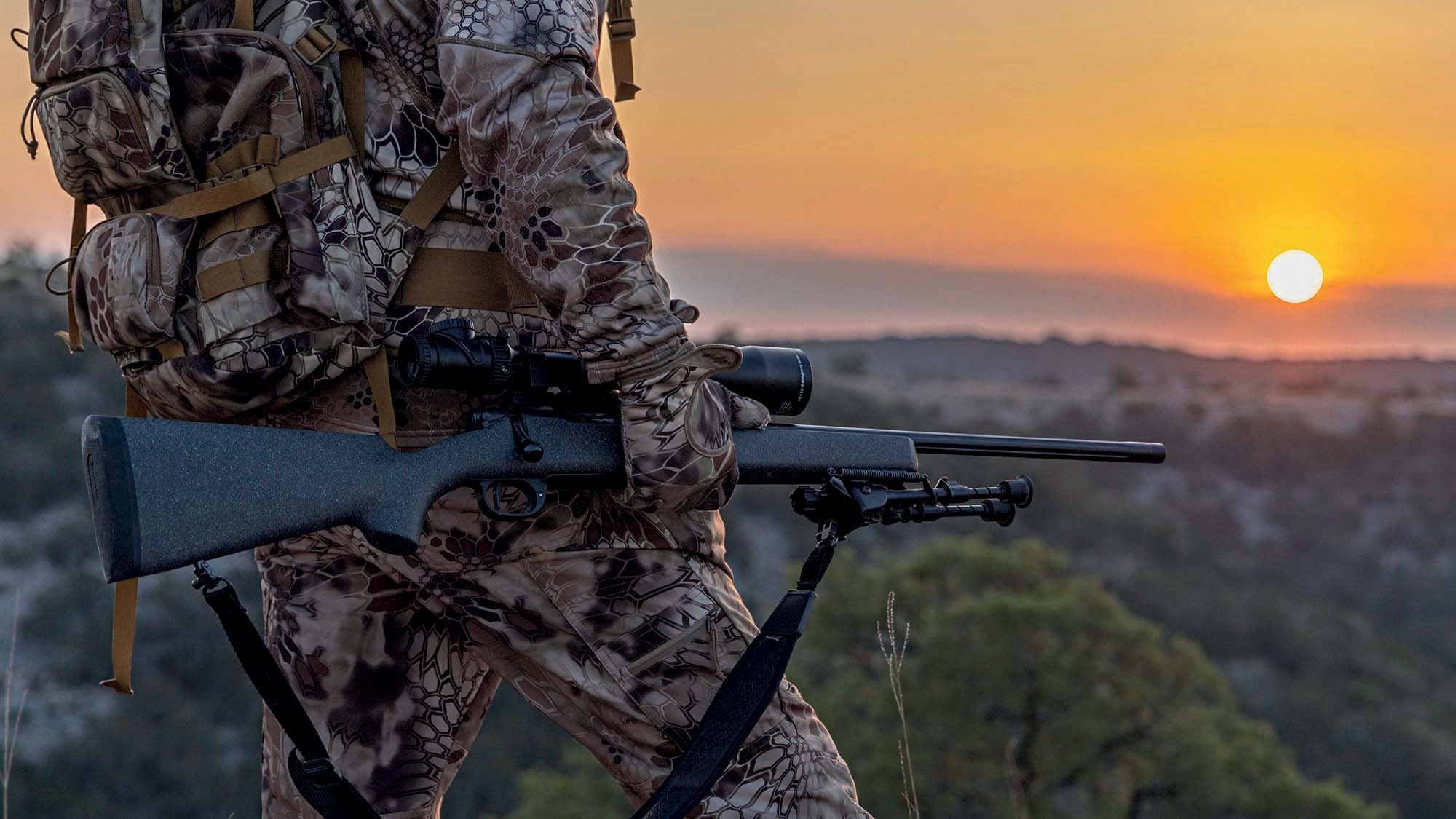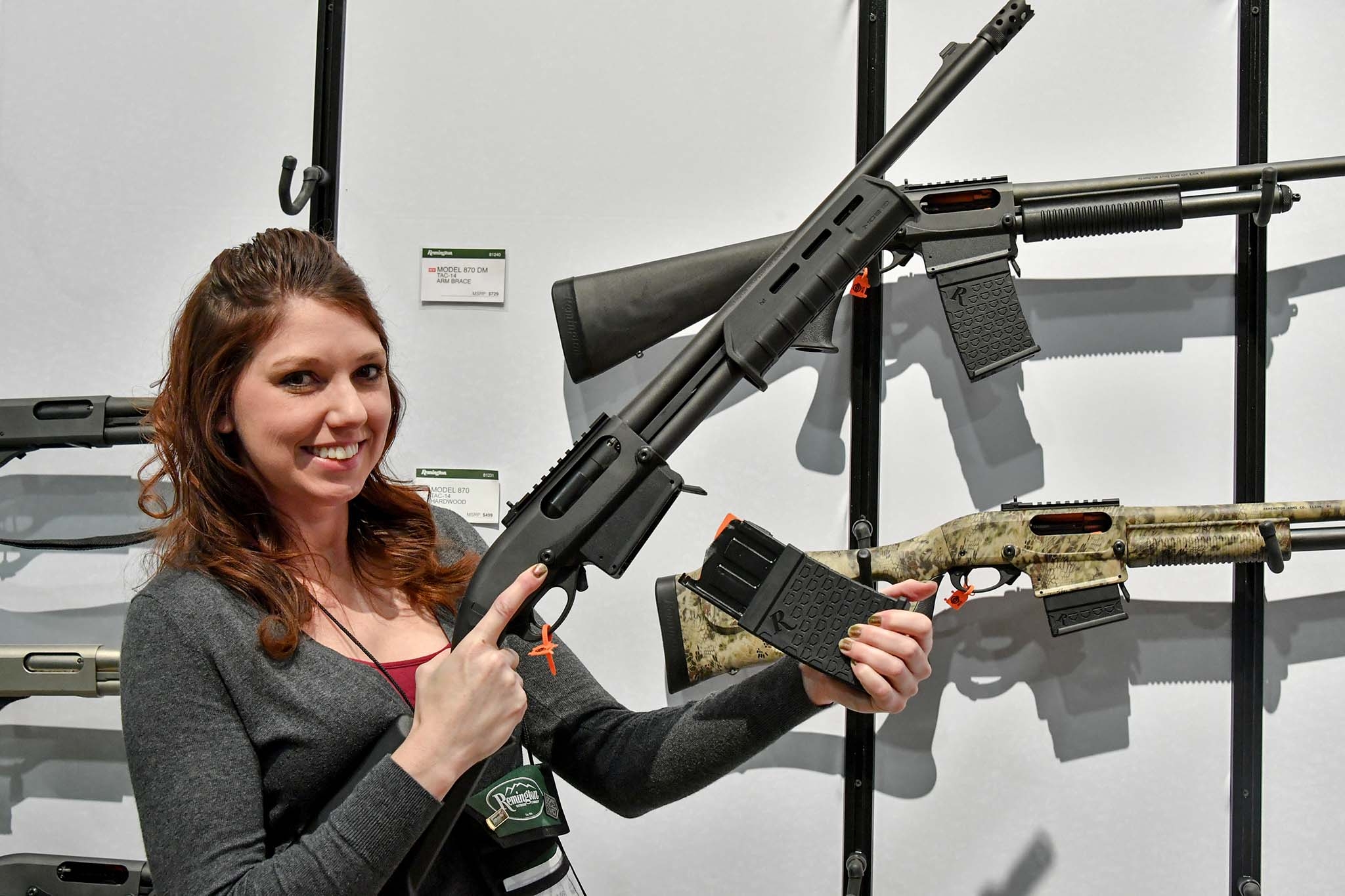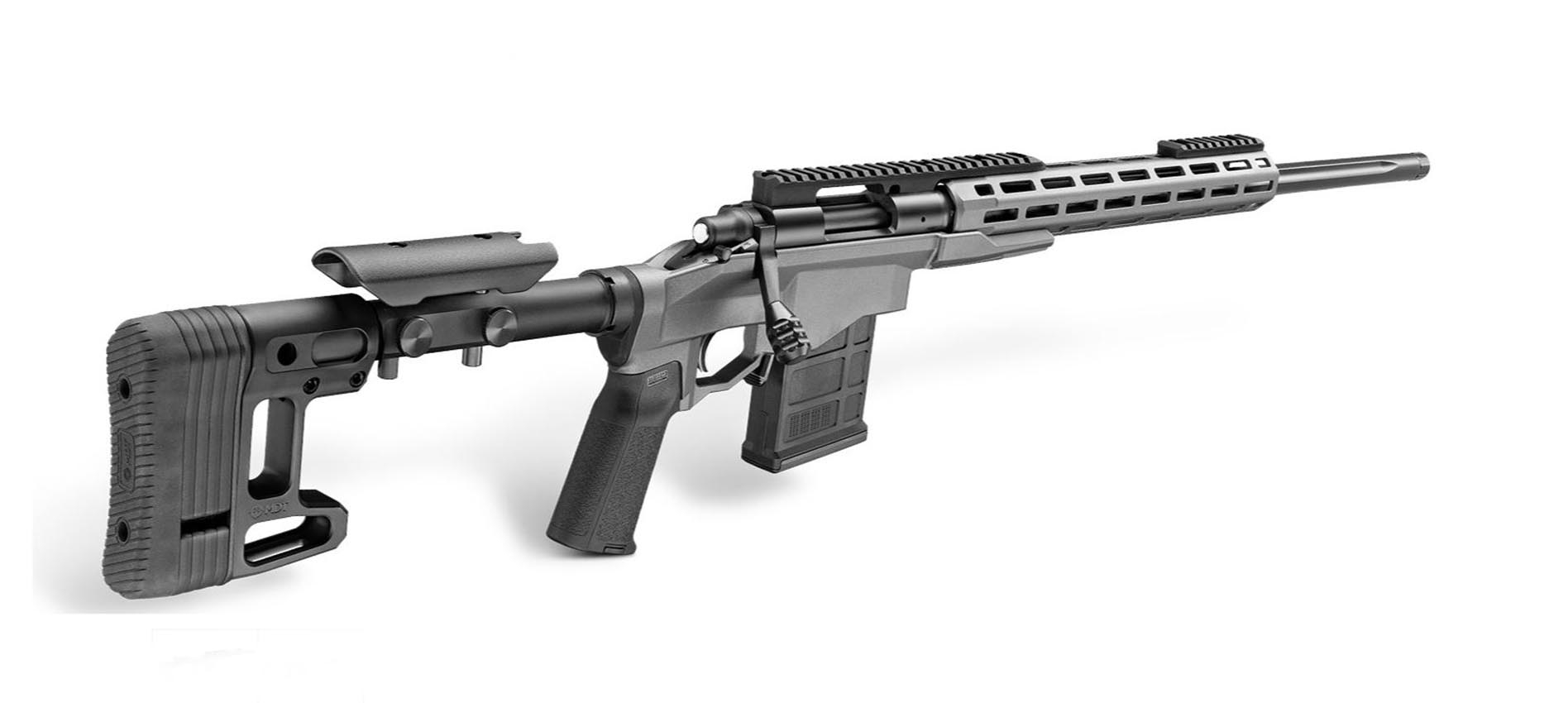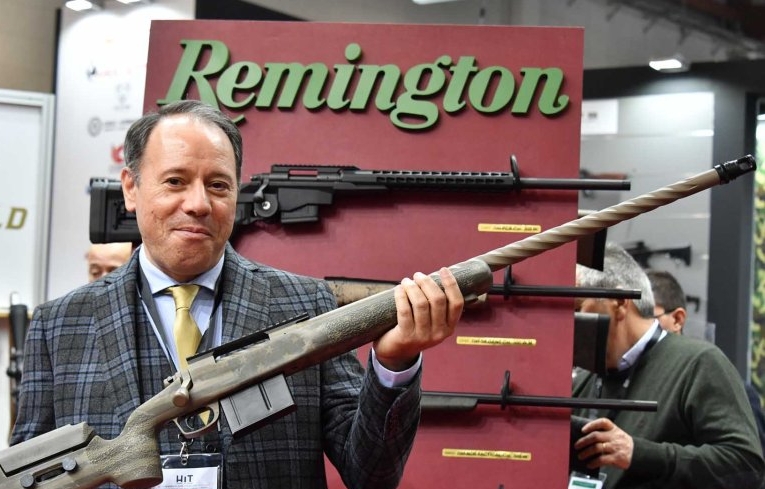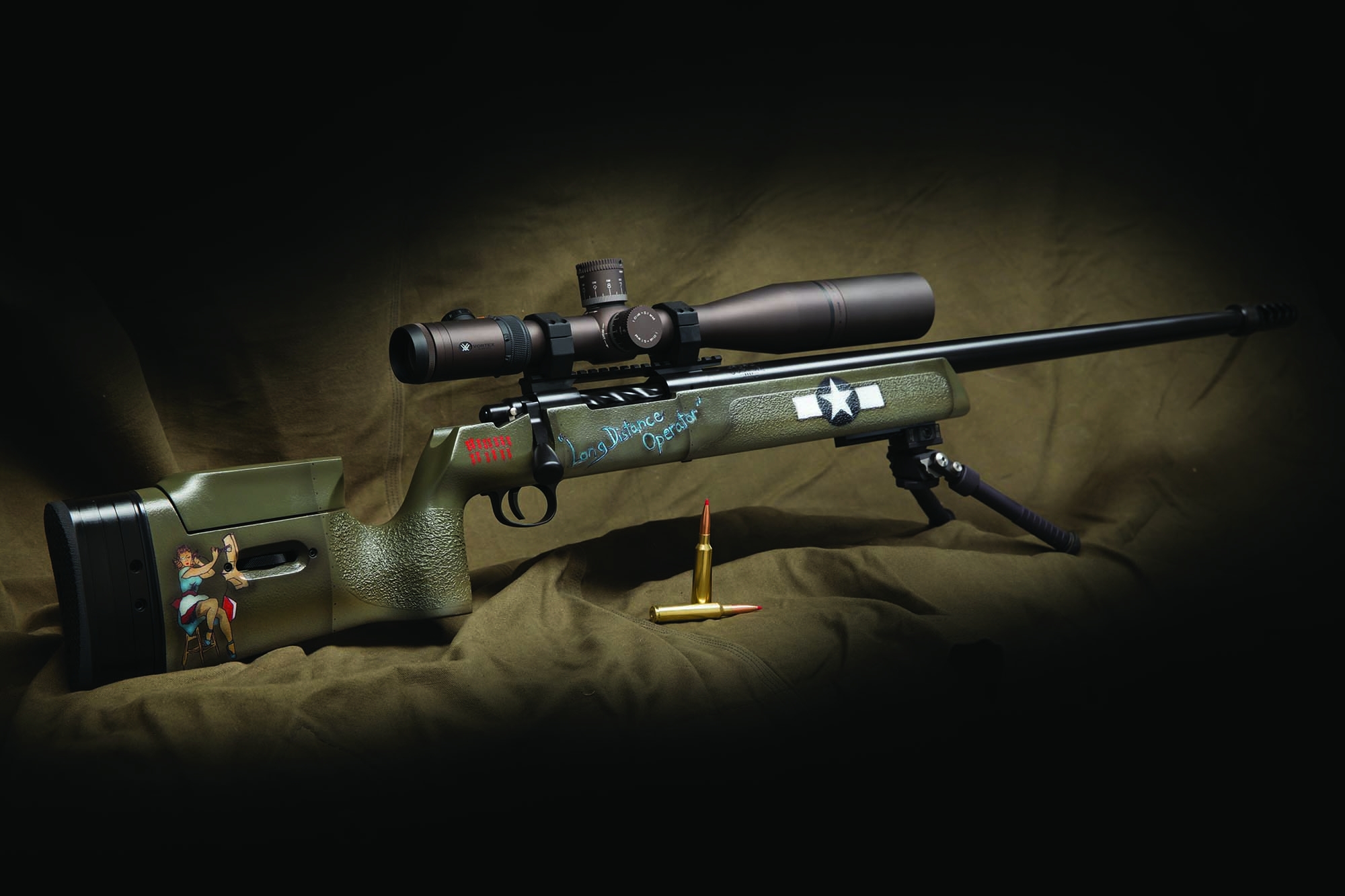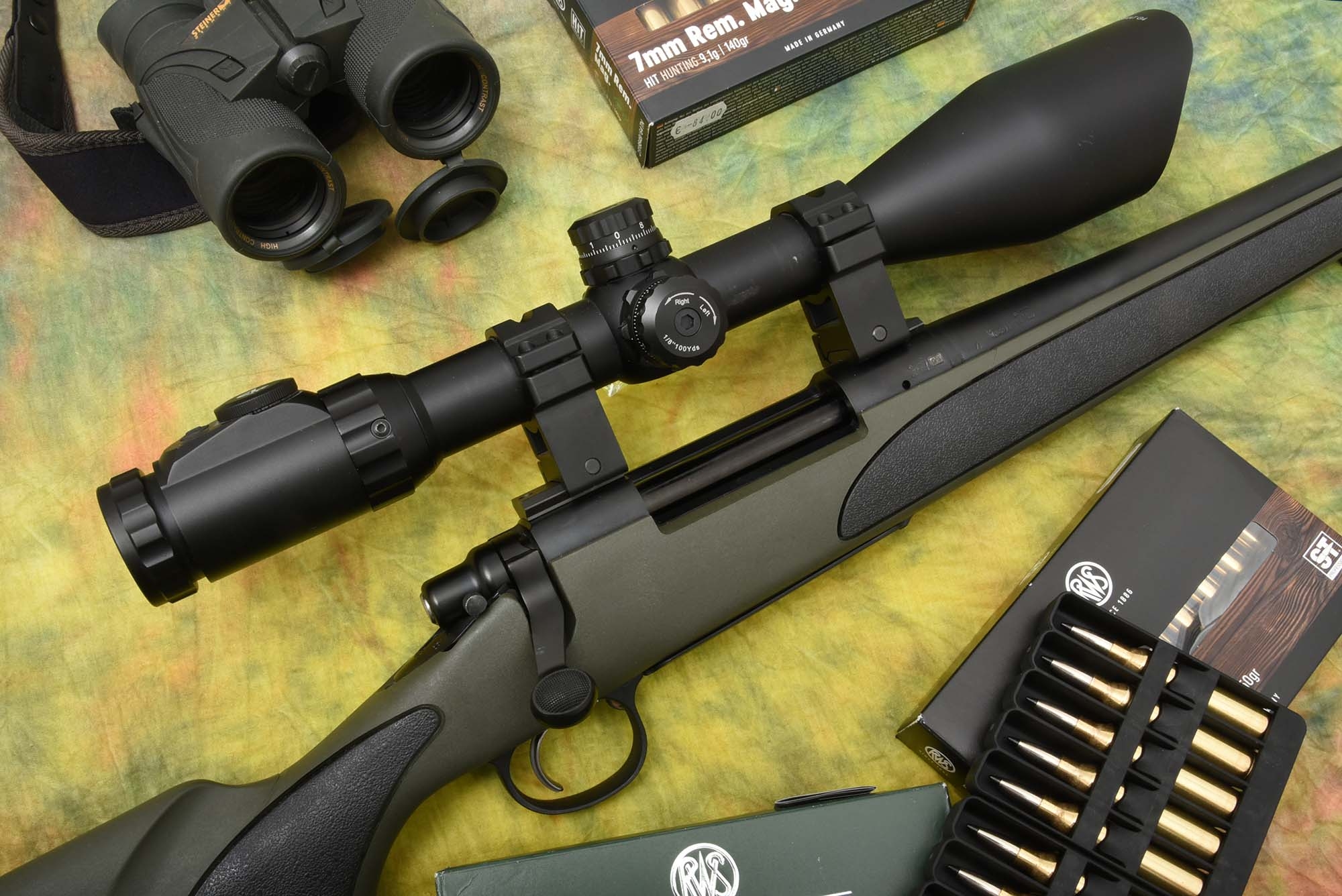In the beginning there was the “Masada”: MagPul Industries Corporation disclosed the weapon to the public, with great fanfare, on the occasion of SHOT Show 2007. Initially, the Masada was born as a “concept gun”, designed to improve a number of shortcomings of the extremely popular platform M-16/M4, but MagPul engineers made so many changes and improvements to the Black Rifle original project that the result was a completely new platform, well adapted to the canons of modularity required by modern military weapons.
MagPul announced that the new “Masada”, evocative name of a city in Judea where between 73 and 74 A.D. the Sicarii resisted the siege of the Roman army, would be available within a year, at a cost per unit of approximately 1500 dollars.
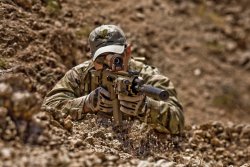
None of this happened. Not wanting to deal with the costs and risks of the acquisition of technologies necessary for the mass production of a weapon whose success may have been taken for granted, MagPul Industries soon established an agreement with Cerberus Capital Management L/P, a financial conglomerate that had recently created a subsidiary, the Freedom Group Inc., in order to gain control of several important industrial companies in the American arms sector.
These included Remington Arms Company in Madison, North Carolina, and Bushmaster Firearms International of Windham, Maine, historically supplying small arms systems to the US Army: in particular, Bushmaster had supplied (and still does) complete weapons and components for the M-16/M4 platform since operation Desert Storm days, as well as equipping with M4 carbines, and similar firearms, special units of several Federal public safety agencies, while the military supply history of Remington Arms Co. to the US Government, regarding individual weapons and ammunition, has its roots much further back in time, well before the American civil war.
Bushmaster acquired patents and licenses for manufacturing, and began a long development phase, sincerely incomprehensible given the proven quality of the “Out-of-the-box” semiprototypal product, as showcased and presented by MagPul, which delayed the mass production of the firearm another three long years and made many analysts suspect that behind all of this there was a veiled attempt to undermine the new product, of undoubted quality, in favour of Bushmaster's far more dated flagship series, the M4.
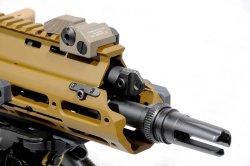
Only during the 2010 SHOT Show did Bushmaster finally launch its version of the “Masada”, named ACR, or Adaptive Combat Rifle. Observers were shocked when the price per unit of the semi-automatic models, intended for the civilian market and police forces, was revealed: over two thousand five hundred dollars for the “basic” model, almost three thousand for the “tactical” variants.
However, this did not prevent a very careful testing and evaluation of the military version of ACR by the US Armed Forces during a private Meeting held on the occasion of the Industry Day on November 13, 2008, aimed at assessing the most important firearms market offerings, before launching the long-awaited Request for Tender that should have lead to the adoption of a new individual weapon to replace the Black Rifle, designed by Eugene Stoner almost half a century ago.
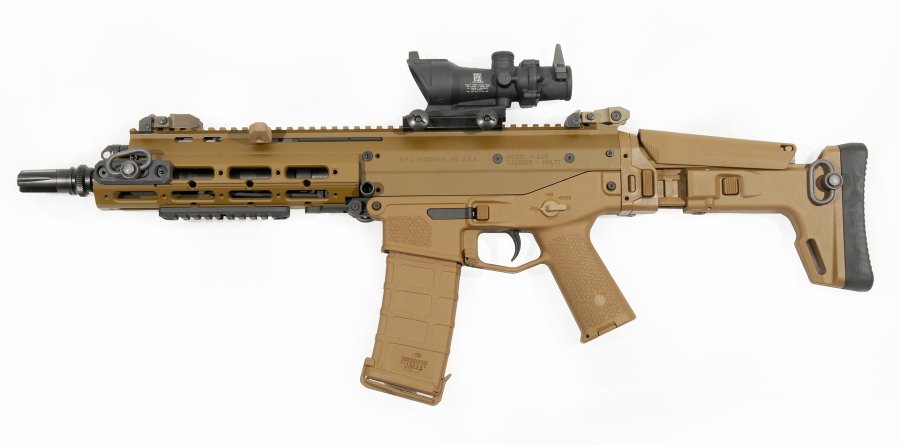
In the meantime another subsidiary of Freedom Group/Cerberus Corporation, Remington Arms Company, constituted a Military Products Division with the stated purpose of returning to being one of the leading suppliers of individual weapons and ammunition for the US military, and not only; a role, as mentioned above, historically held by the Madison, NC Company, but which lost its lustre in recent years. The Military Products Division was immediately a great success, winning the contract to supply the USA Armed Forces a new Modular Sniper Rifle.
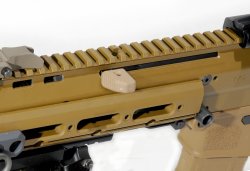
Soon after, it was announced that the Remington MPD would manage the international military market for the new Adaptive Combat Rifle, at long last ramped up in mass production phase.
The Adaptive Combat Rifle is essentially a multifunctional assault/battle weapon, able to meet most of the needs of the modern infantry soldier, and Special Forces operator alike. The MagPul engineers responsible for its design (Drake Clark, Richard Fitzpatrick, Brian Nakayama and Mike Mayberry) have condensed the best features of all the best known and most popular infantry individual weapons into this model; a risky move under many points of view, as similar experiments carried out during the 20th Century in other countries (e.g. from Britain with the Bull-Pup SA-80, or in Australia with Leader Dynamics T2 Mk5-) resulted in sensational failures because of the inability on the part of engineers to combine harmoniously such peculiarities in a platform that did not suffer “incompatibility” of any kind among other Features, designed for weapon systems totally different from each other.
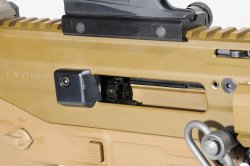
MagPul designers and Remington, Bushmaster’s mission appears to be truly successful, as confirmed by three years of strict Test conditions, in very hostile environments, such as extremely sandy soils or with very low temperatures, as well as a long series of Over-the-Beach Tests, to prove the superiority of the ACR over the M4 platform, known to suffer Catastrophic failures in this particular test.
In technical terms, the ACR is a multi-lug rotating bolt, indirect gas, short-stroke piston operated assault rifle, based on a set of features borrowed from a proven system already used by the ill-fated XM8-LAR proposed in 2005 as a replacement for the M-16 and rejected despite the soundness of its design, which in turn was based on the German Heckler & Koch G-36 short-stroke piston rifle, again derived from the Armalite AR-18 (H&K possibly acquired the design when the German company was owned by Royal Ordnance in the early ‘90s).
The gas system features a two-position valve on the permanently mounted gas block for pressure adjustment, useful for use in dirty conditions, with out-of-standard ammunition, or the use of a proprietary sound suppressor, to be used with the special flash hider mounted on the gun; the sound suppressors for the ACR are produced by AAC - Advanced Armaments Corporation, which is also a company controlled by Freedom Group/Cerberus conglomerate.
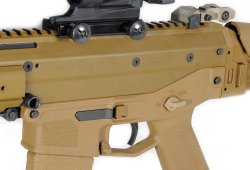
The gas block , tube and piston are mounted to the stainless steel barrel, which is manufactured using the proven cold hammering on a negative Plug method with a rifling twist of 1:7 (for the military 5.56 mm round).
The barrel assembly’s barrel extension and rear end of the actuating rod connected to the gas piston mate with a trunnion in the upper receiver, and is locked in place with a cam operated by a long lever, instead of a coaxial threaded barrel nut; the system allows a very easy barrel assembly removal and replacement on the field without the use of any tools.
The operator can therefore quickly change the barrel in order to adapt the weapon operational requirements for the ongoing mission; at this time, three barrel lengths are available for the ACR (10.5, 16.5 and 14.5 inches).
The ACR rifle can be configured as an “entry carbine” role (essentially for CQB use), as an assault carbine using the medium barrel length or a DMR /assault rifle in only a few seconds and without the need for special equipment; just the tip of a 5.56mm round is required to separate the two Receivers and remove the barrel and the bolt group.
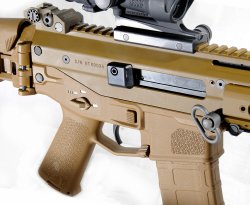
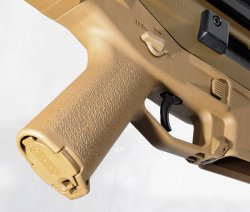
The ACR adopted the general construction style of the M-16 rifle, based upon two receivers, considered by many analysts as the most reliable starting point in terms of ease of disassembly.
The upper receiver is entirely built out of a single billet of 7075-T6 aluminium alloy; the weapon reviewed in this article features an upgraded 7075-T6 alloy “RAS” (Rail Adapter System) forearm, fitted with Picatinny rails on the full length of the sides and under the forearm, but it is not strictly a monolithic combination forearm/receiver; only the top rail is in fact integral to the receiver, as the forearm necessarily must be removed to access the quick change barrel system.
The main version that will be available from Bushmaster Firearms on both civilian and professional markets will include a polymer forearm, featuring mounting slots to add optional Picatinny rails, while the version offered on the military and professional market, featured in this article will always have the alloy modular forearm.
It will be possible, however, to special order any version either from Remington or Bushmaster; the latter, having already superior 7075-T6 alloy machining capability (due to its M-16/M4 production lines), will be in charge of making all of the Upper receivers, including Remington’s guns.
Regardless of the version, the barrel is always free floated, in order to reduce vibrations and improve accuracy.
As previously stated, the Upper receiver is always equipped with a Picatinny rail for optics along the entire upper length; it also features two symmetric cuts on each side, used by the small charging handle, which can be reversed for left hand use. The charging handle knob is quite small, similar in size to the one found on the FN SCAR rifle, and it is non reciprocating with the bolt carrier. This solution allows for a smaller amount of moving parts during the firing cycle, improving accuracy and allowing the user more freedom in handling the weapon during fire.
A note: the upper receiver is, by US Federal law “the weapon”, since all markings and the serial number is engraved on it, vs. the M16/M4 platform, in which it is the lower receiver to feature markings and SN.
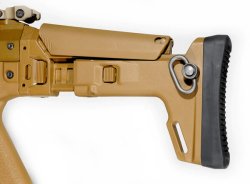
The lower receiver is made of polymer, and host for the trigger system, a direct derivation of the one used in the M-16; in fact, many components of both trigger systems are interchangeable. The whole trigger system is housed in a metal package that can be easily removed and replaced from the lower receiver.
The grip is hollow and features a watertight cover, to hold small items such as replacement batteries or spare parts.
The Lower Receiver houses all the controls, each completely ambidextrous: the large magazine release is protected by surrounding fencing; the three position (safe, single shot and full auto) fire selector lever; and the Hold-Open control, in the form of a double lever placed on the front/lower portion of the trigger guard, akin to the one used in the already mentioned ATK-Heckler and Koch’s XM8 LAR: this location was chosen to ease and speed up reloading, and the magazine release button that commands the Hold-Open is quickly accessible and operable with the index finger.
It can be said that the ACR recharges and locks on a loaded barrel, almost literally, with a finger.
The Lower receiver houses the stock, also in polymer, available in a fixed configuration, with only an adjustable cheek piece, or collapsible, provided with an adjustable cheek piece and butt-plate adjustable to six positions to fit the size and equipment of the operator. This last variant has a watertight compartment for items which are useful on the battlefield; the stock is quickly detachable from Lower during disassembly and can be replaced with a different version. Both versions are also available in a side foldable configuration.
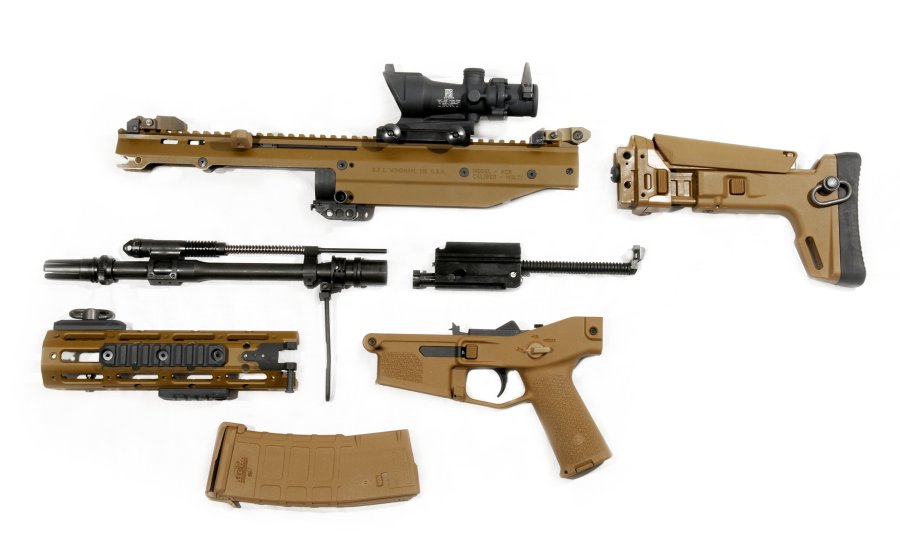
The heart of the system is the interesting bolt/bolt carrier unit, consisting of a large steel machined block, grafted to the rear of the recoil spring guiding rod, housing the bolt head with seven radial locking lugs, based on Stoner’s standard AR15 design.
The trunnion in the upper receiver is only used to fasten the barrel assembly to the receiver itself, as the bolt locks in the barrel extension, transferring no strain or pressure to receiver.
The design of this part is the main reason for the inherent reliability of the weapon, as well as the base for its modularity.
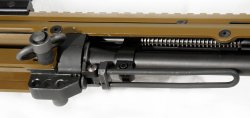
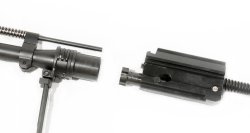
Most of the moving parts are contained within this unit, which normally does not require detailed disassembly while performing field stripping and maintenance, thus protecting the most sensitive elements of the weapon, preventing contamination of dirt and accumulation of carbon deposits.
Moreover, because of its hefty mass, cycling the action requires the dissipation of a substantial amount of gas and recoil energy; This helps keep the reactions of the firing weapon within acceptable levels, with an excellent controllability during shooting burst in full auto mode, with a 650-700 rounds/minute cyclic rate, also allowing an operator without specific selective fire training to shoot automatic fire bursts with good percentage of success, eliminating the need for a three shots burst limiter.
The bolt carrier unit is also multi-calibre; this means that in order to achieve one of the main features of ACR, the conversion to different ammunition calibres, it is sufficient to change the barrel assembly, magazine and bolt head.
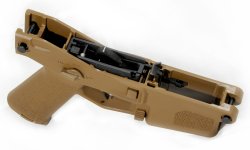
At this time, apart from the standard 5.56x45mm, the only conversion kit available is for the 6.8x43mm Remington ammunition, a round that seems to have enjoyed discrete successes in the hands of special military forces operators and Police units by virtue of its superior ballistic penetration and effectiveness qualities, at the same time sporting a controllability equal to that of the Standard NATO ammunition.
Another ammunition for which a conversion for the ACR may be soon available is the 6.5 Grendel, an interesting round developed by gunsmith Bill Alexander at the military arsenal of Radford, Virginia, which combines a 6 mm ball in a Soviet 7.62x39mm case.
Other calibres that would be interesting to manufacture a conversion kit for the ACR obviously include those that are most common in the current operational theatres in the hands of “the enemy”, the 7.2x39mm and, to a much lesser extent, the 5.45x39; these are the ones which MagPul had originally intended the adaptability of “Masada”, since the original lower receiver featured a swappable magazine well with a pivot pin located much closer to the bore axis, so that it was possible to implement a totally different magazine (AKM) system together with the conversion kit.
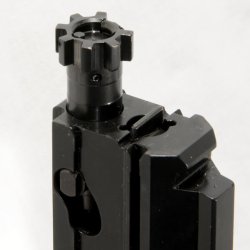
This feature was however eliminated in the Bushmaster/Remington “improvement” phase, redesigning the upper/lower receiver relationship and pivot pin location in a fashion similar to the AR15 platform.
Presently, a conversion in these calibres will need an additional lower receiver to accommodate the mechanically different magazines.
The 5.56 mm ACR uses standard STANAG 4179 specification compliant magazines; the magazine specifically designed for the “Masada” from MagPul, and shipped with the ACR, however is the popular P-MAG, a high impact techno-polymer product which has passed a long series of torture tests and that is presently in use by American troops, in addition to being already sold on the commercial market.
Regarding the increasing use of 7.62x51mm-NATO ammunition, on modernized Battle Rifle type platforms especially in the Middle Eastern theatres, MagPul is addressing the market requests by developing a new model, called “Massoud”, externally similar to the “Masada”/ACR but with several key differences, including a different design of the short-stroke gas piston system.
Magpul has not disclosed any presentation date or unveiled any preproduction model, as the only prototype presented has been showed way back at the 2009 shot show; it was a full functional weapon, but still, no further improvement or plans on mass production have been set.
Moreover, it is not “implied” that MagPul will again establish trade agreements with Cerberus Corporation/Freedom Group, not having hidden the Company’s disappointment in recent years in light of the delays in Bushmasterʼs product launch.
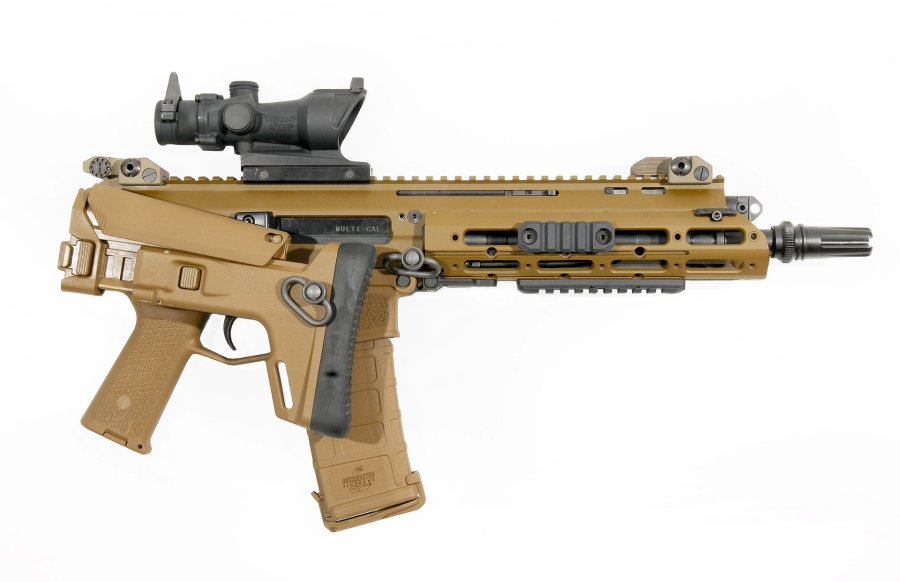
What stands out, however, is the fact that finally one of the more comprehensive and versatile light individual weapons platform created to date is available on the market, perhaps even much more than the celebrated Belgian FN SCAR system, adopted maybe too hastily by the Joint operational command of the USA special forces. If the SOCOM might be too late for a rethink, for the bulk of the armed forces could be the long-awaited right opportunity to replace the venerable M16, a weapon platform that, in its various incarnations, has served the US G.I. since the conflict in Vietnam, and now may begin to show its age.
Technical data sheet
| Manufacturer | Remington Military Products Division | ||
| Model | ACR-Adaptive Combat Rifle | ||
| Type | Assault rifle | ||
| Caliber | 5.56x45mm-NATO – 6.8x43mm-SPC – 6.5x39mm “Grendel” | ||
| Barrel | | 10.5” (Entry); 14.5” (Carbine version); 16.5” (DMR) | |
| Magazine | 30 rounds, 4179 STANAG compatible detachable-polymer magazine (P- MAG) | ||
| Trigger |
| Single action, closed bolt – standard AR two-stage trigger design with possibility of drop-in upgrade |
|
| Rate of fire | 650/700 rounds per minute | ||
| Sights | Picatinny rail for optic collimators and Iron Sights |
| |
| Materials | Technopolymers, high carbon steel, aluminium alloys | ||
| Total length | Variable depending on the barrel length (min. 55 cm with folded stock, and max. 95.2 cm with stock fully extended) | ||
| Weight | Approx. 3.6 kg |





